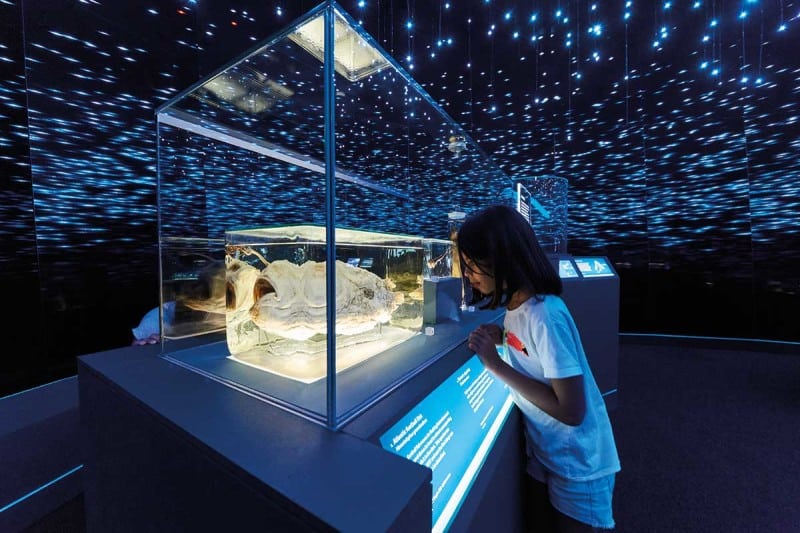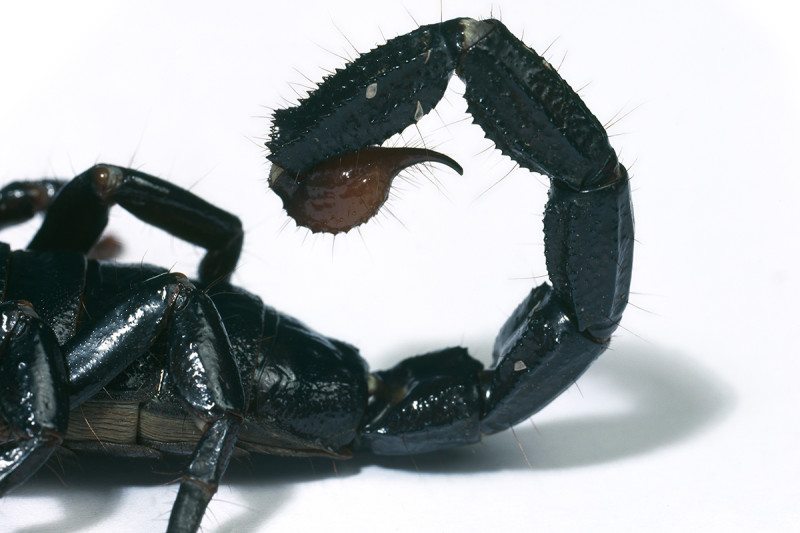
Going to the dark side at London’s Natural History Museum for New Scientist, 13 July 2018:
At some point in the last couple of years, someone at London’s Natural history Museum must have decided that it should get beautiful. In 2016 Colour and Vision set a high bar; Life in the Dark shows just how far they have come.
Parts of Life in the Dark are designed by the Jason Bruges studio, which is better known for huge, open-ended generative artworks like the digital crowd massing along a 145-metre wall at Sunderland’s railway station, and the liquid-crystal digital waterfall at Westfield Shopping Centre which, years ahead of the competition, proved that bytes, set free with the right algorithms, could be just as unpredictable and fascinating as actual water droplets.
Their work here at the museum is at a more modest scale, but unobtrusive it most certainly is not. There’s a room hung with card mobiles and a complex lighting track that fills with phantom bats as you walk through it, like a sort of 3D flickerbook.
The final room of the show is lit by bioluminescent denizens of the deep ocean – or at least, their digital avatars. Hung from a false ceiling above the visitors, Jason Bruges’s complex three-dimensional, 3000-point display accurately reflects the behaviour and movement of more than half a dozen species. Naturally, there’s been some poetic licence with the light-show’s strength and density.
It’s a moot point whether visitors will appreciate the careful research that’s gone into all those different blues dangling and flashing above their heads, or whether indeed anyone will notice that the animated badger and hedgehog are programmed not to approach each other on the video wall that greets you when you enter the exhibition. The journey as a whole is what matters, as the show’s curators lead us from English woods at sunset, through caves of ever-increasing depth and strangeness, into the deep ocean where suddenly everything and anything seems biologically possible, and not always in a good way.
Life in the Dark is an extraordinarily powerful (not to say downright creepy) exercise in letting go of everything you thought was normal in nature. The possum-like aye-aye’s needle-like middle finger, tapping for grubs under the bark of night-time trees, is bad enough, and it comes as no comfort to read that “If you go into a cave in Central America, you will likely see huge mounds of guano (bat poo) covered with feasting cockroaches.”
One inadvertent effect of this show was to confirm me in my lifelong aversion to caves. Given enough time, everything that lives in them evolves to go blind. Everything shrinks. Everything bleaches itself out – except for the African dwarf crocodiles who, thanks to the guano diet of their prey, turn a sickly orange. On learning that giant centipedes, Scolopendra gigantea, hang from cave walls to pounce on passing bats, I high-tailed it to the section about the deep ocean, and where, oddly for an environment that is mostly lightless, virtually no animal is blind.
Animals that inhabit the middle ranges of the water column use bioluminescence for camouflage, matching their self-made light to the dwindling intensity of downwelling sunlight. The eyes of the spookfish Opisthoproctussp point upwards to detect prey, while mirror-like structures in its belly reflect the bioluminescence produced there, breaking up its silhouette from below.
Lower still, brittle stars, Ophiomusium lymani, flash brightly to temporarily blind predators, while others produce a gently glowing mucus to signal their toxicity. The Atolla jellyfish, confronting a predator, uses a swirling “burglar alarm” display to attract even bigger predators, triggering the deep-sea equivalent of a bar-room brawl, through which it makes an unobtrusive exit.
New nocturnal species are turning up all the time, only 5 per cent of the world’s oceans have been explored, and there are bound to be cave ecosystems still awaiting discovery. It’s appropriate, then, as well as interesting, to learn something about the researchers who’ve contributed to this show. Who knows, the unobtrusive videos in this show may inspire a new generation of researchers.
They’ll have to be a lot less squeamish than I am, though.


